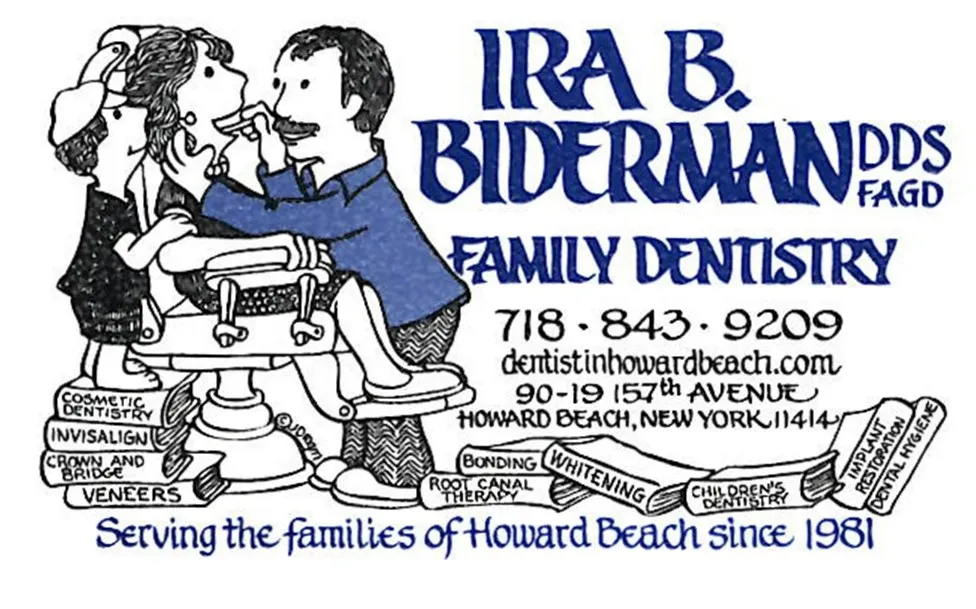Invisalign Howard Beach, Queens NY
Invisalign Orthodontics
Invisalign is a popular orthodontic treatment that is known for its virtually invisible aligners, which are used to straighten teeth. While the aligners are near-invisible, the results are still quite noticeable. Invisalign has been a popular alternative to traditional braces for many years and has become a popular choice among adults looking to straighten their teeth. In this article, we will examine the pros and cons of Invisalign to help you decide if it is the right choice for you.

Pros:
Aesthetics: The most significant advantage of Invisalign is its appearance. The aligners are made of a clear, nearly invisible plastic material, which makes them much less noticeable than traditional braces. This makes Invisalign a great option for people who are self-conscious about their appearance or who don’t want to detract from their smile.
Comfort:
Invisalign aligners are designed to be comfortable and easy to wear. They are custom-fit to your teeth and are made of a soft, flexible material that is gentle on your gums and cheeks. Unlike traditional braces, which can cause irritation and discomfort, Invisalign aligners are smooth and do not have any metal brackets or wires that can dig into your mouth.
Flexibility:
Invisalign aligners are removable, which means you can take them out for important events, such as weddings, job interviews, or special occasions. This makes it easy to maintain good oral hygiene and eat your favorite foods without worrying about food getting stuck in your braces.
Faster Treatment Time: The average treatment time is faster than the average treatment time for traditional braces, which is about 2 years. This is because Invisalign aligners use advanced 3D computer imaging technology to precisely map out the movement of your teeth, which helps to speed up the treatment process.
Improved Oral Health: Invisalign aligners are designed to be taken out to eat and/or brush, which makes oral hygiene easier to maintain. This helps to reduce the risk of tooth decay, gum disease, and other oral health problems that can occur with traditional braces.
Cons:
Cost: Invisalign is typically more expensive than traditional braces, which can make it less accessible for some people. The cost of Invisalign can vary depending on the severity of your orthodontic issues, the length of treatment, and other factors.
Responsibility: Because Invisalign aligners are removable, it is up to you to keep track of them and wear them as directed. If you don’t wear your aligners for the recommended 22 hours a day, your treatment could be delayed.
Limited Treatment Options: Invisalign is not suitable for all orthodontic issues and may not be able to correct severe problems, such as bite issues or severe crowding. If you have a complex orthodontic issue, you may need to consider traditional braces or other orthodontic treatments.
Adjustment Period: Like any orthodontic treatment, Invisalign can take some time to get used to. During the first few days, you may experience some discomfort, tenderness, and sensitivity, but these symptoms typically subside after a few days.
Not As Durable: Unlike traditional braces, which are made of metal, Invisalign aligners are made of plastic and can be damaged if not handled carefully. If you lose or damage your aligners, you will need to purchase replacement aligners, which can add to the overall cost of your treatment.
In conclusion, Invisalign is a better fit for people who place a high value on their personal appearance. While many adults have no problems wearing metal braces, there are quite a few who have a hard time seeing themselves do the same. If Invisalign sounds like it might be right for you, contact Dr. Biderman’s office, and set an appointment today.
Our Results Speak For Themselves:
Invisalign treatment begins with a consultation with an orthodontist or dentist who is trained in the use of the system. During this consultation, the orthodontist will evaluate the patient’s teeth and create a treatment plan that outlines the expected results and timeline for the treatment.
The treatment plan involves creating a series of custom-made aligners that are worn for a specific period of time, typically two weeks. The aligners are made from a clear, BPA-free plastic material that is nearly invisible when worn. Patients wear the aligners for at least 20-22 hours per day, removing them only for eating, brushing, and flossing.
Queens Invisalign Near Me
Invisalign aligners gradually shift the teeth into the desired position by applying gentle pressure to specific areas of the teeth. As each set of aligners is worn, the teeth move slightly closer to their final position. The number of aligners required for each patient varies depending on the severity of the dental issue being corrected.
Invisalign treatment can be used to correct a variety of orthodontic issues, including crowded or spaced teeth, overbite, underbite, crossbite, and open bite. Invisalign is particularly effective for mild to moderate cases, although it can also be used for more severe cases in some instances.
Invisalign Dentist
One of the main advantages of Invisalign over traditional braces is its discreet appearance. The aligners are nearly invisible when worn, making them an attractive option for adults who may feel self-conscious about wearing braces. Invisalign aligners are also more comfortable than traditional braces, as they do not require the use of brackets or wires.
Another advantage of Invisalign is the ease of maintenance. Unlike traditional braces, there are no wires or brackets that can trap food particles and bacteria, making oral hygiene easier to maintain. Patients can simply remove the aligners to brush and floss their teeth as they normally would.
Invisalign treatment typically takes between 12 and 18 months to complete, although this can vary depending on the complexity of the case. Patients are typically required to visit their orthodontist every six to eight weeks to ensure that the treatment is progressing as planned.
Invisalign Cost
The cost of Invisalign is one of the most significant considerations for many people, however, the cost can vary greatly depending on several factors, including the severity of your orthodontic issue, the length of treatment, and where you live. The cost of Invisalign can also be affected by the experience and qualifications of the orthodontist or dentist performing the treatment.
One of the main factors that affects the cost of Invisalign is the severity of your orthodontic issue. The more complex your issue, the longer your treatment will take. This also means you will require more aligners, which increases the overall cost of treatment. For example, if you have severe crowding or bite issues, you may need additional attachments, buttons, or other devices, which can add to the cost of treatment.
Another factor that affects the cost of Invisalign is the length of treatment. It varies depending on the severity of your issue. The longer your treatment takes, the more aligners you will need, which can increase the cost of treatment.
Location is also a factor that can affect the cost of Invisalign. The cost of Invisalign can vary greatly depending on where you live, with prices being higher in urban areas and lower in rural areas. Additionally, the cost of living and the cost of healthcare can also affect the cost of Invisalign in different regions.
Invisalign Orthodontist
The experience and qualifications of the orthodontist or dentist performing the treatment can also affect the cost of Invisalign. Orthodontists are specialists who have received additional training in orthodontics and have extensive experience in treating orthodontic issues. As a result, orthodontists may charge more for their services than general dentists. However, the added experience and expertise of an orthodontist can ensure that you receive the best possible treatment and results.
In some cases, dental insurance can cover part of the cost of Invisalign. However, this can vary greatly depending on the specifics of your insurance policy. These days, insurance plans rarely cover the cost of Invisalign.
However, you want to always check just in case it does. Instead of going online, call instead. Find out exactly what your dental insurance covers, and ask if there is any coverage for Invisalign.
In conclusion, Invisalign is an effective and discreet orthodontic treatment option that offers many advantages over traditional braces. The cost of Invisalign can vary greatly depending on several factors, including the severity of your orthodontic issue, the length of treatment, where you live, and the experience and qualifications of the orthodontist or dentist performing the treatment. If you are considering Invisalign, then reach out to Dr. Ira Biderman’s office to determine the cost of treatment and what options may be available to you. While the cost of Invisalign can be significant, it is an investment in your oral health and appearance that can last a lifetime.
We are here for all your dentistry needs
For any questions or to schedule an appointment, fill out the form or give us a call today!
For an appointment call:
718-843-9209
© 2023 DentistinHowardBeach.com. All Rights Reserved
